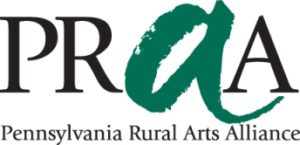Arts Organizations – Reopening Considerations Part 3
Creating a Reopening Plan and Finding Resources for your Organization
 For our final blog on reopening considerations we decided to create a brief guide on how to create a reopening plan. We also wanted to compile a list of resources that we have used, have found helpful and are relevant to a variety of organizations. This is not meant to be comprehensive, nor do we claim expert knowledge. We encourage you to share your thoughts, what has worked for your organizations, and any resources we may have missed.
For our final blog on reopening considerations we decided to create a brief guide on how to create a reopening plan. We also wanted to compile a list of resources that we have used, have found helpful and are relevant to a variety of organizations. This is not meant to be comprehensive, nor do we claim expert knowledge. We encourage you to share your thoughts, what has worked for your organizations, and any resources we may have missed.
Creating a Reopening Plan
Research
The first step in creating a reopening plan is research. It is important to primarily consult resources from trustworthy sources. Use the CDC and local government health officials as a resource first, and then peer-reviewed research. You may also look at leaders in your industry like Americans for the Arts, or government organizations like the Pennsylvania Council on the Arts.
Assign Responsibility
One of the most important steps in deciding to reopen is assigning an individual or group of individuals who will be responsible for creating and implementing COVID procedures. This person or group can take ownership of all necessary reopening steps such as ordering supplies, and training staff or volunteers. This person should also be responsible for staying up to date on state and local mandates as well as CDC recommendations.
Create Policies
By looking at best practices from the government and the arts field, begin to develop policies that best suit your organization and audience. These policies should include all methods in which your organization plans to enforce social distancing. This can include limits on attendance, placing signs, having someone count as people enter your space, creating separate entrances and exits, requiring reservations for time, etc. It is also important to track as best as possible who has been in your space, in case an audience member later learns that they had the virus while in your space. This makes it possible for you to alert your staff, volunteers and other audience members for
Supplies
Depending on what your policies are, your needs for supplies may change. There are certain things you will likely need to buy such as cleaning products to disinfect your space and gloves for your employees or volunteers responsible for cleaning. You may also need signage to enforce social distancing, masks if you choose to provide them for your staff, volunteers or audience members, and hand sanitizer. Please check CDC guidelines on purchasing appropriate PPE.
Training Staff
It will also be important for your staff and volunteers to be appropriately trained to handle COVID procedures. All staff and volunteers should be aware of the specific measures that are being taken to protect them and the audiences. They should also be aware of how to properly disinfect the space, and guide people through your space while remaining socially distant.
Messaging
It is important to appropriately communicate your COVID policies to your audience and other stakeholders. Clear, positive messaging is important to keep your audience happy and encouraged. Make them feel safe in your space. If you are requiring your audience members to do something outside of what your local mandates require, or different from what they are used to with your audience, inform them ahead of time. Clear communication can make your audiences feel safe, manage expectations, and reduce the stress of misinformation.
Other Resources
We know that the reopening plans will be different among different types of organizations. There is also a ton of information out there to sort through and it may be difficult to find what is relevant to your audience and organization. We have created a list of resources that we have found to be helpful. We will continue to update this list as we find more resources and would love any suggestions! Check it out HERE.
Recent News
- Creative Health Impact Grant Open for the 2024-2025 Year April 22, 2024
- Folkway Feature – Meet the Artist Joe Grkman Jr. March 12, 2024
- Opportunities in the Arts Event December 1, 2023
- Quilting: A Strong-Held Tradition in Armstrong County September 8, 2023
- Intangible Cultural Heritage – What is it? July 14, 2023
